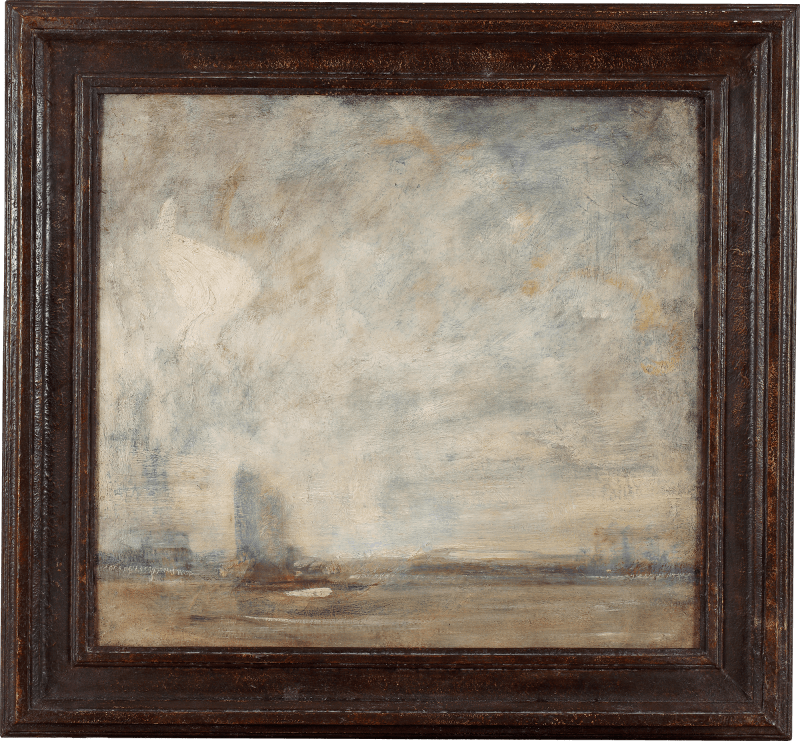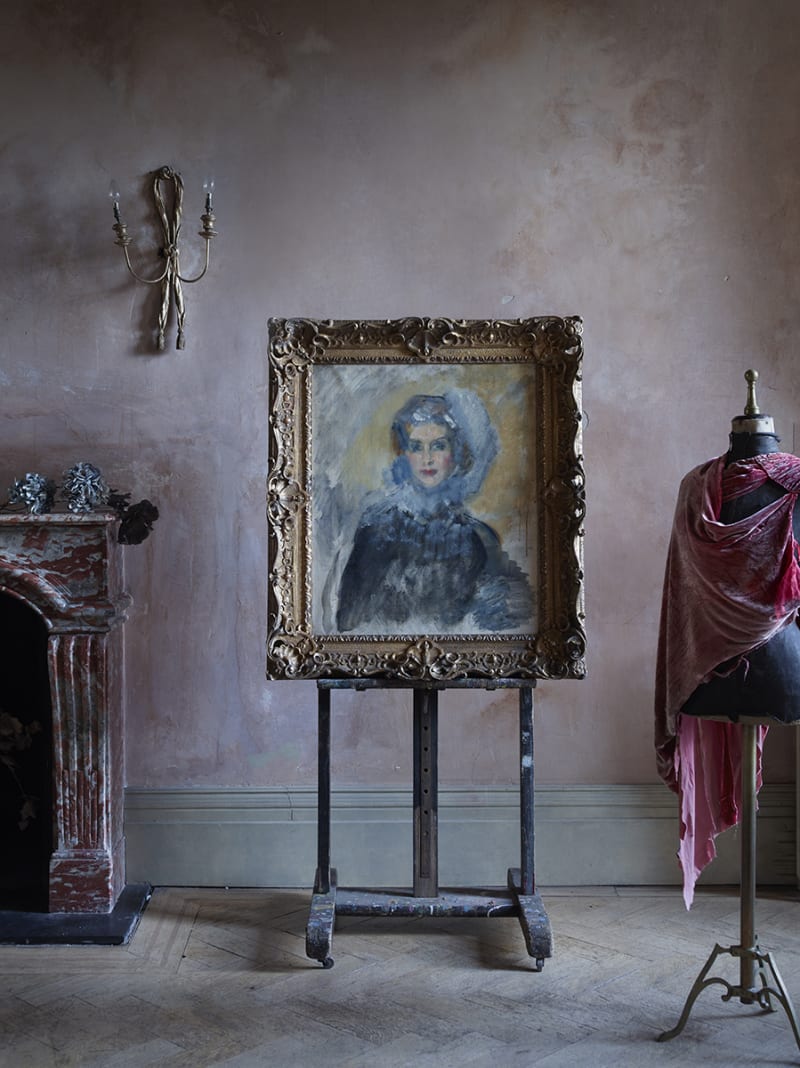Sold out
To view all current artworks for sale visit philipmould.com
This exquisitely poised portrait was painted in late 1919 and depicts Leslie Howland (née Wallace), a well-known figure in New York high society.[1]
McEvoy’s diary from 1919 indicates that sittings began in London in November that year, just over a month before he set sail to America for the first of three visits. Perhaps it was Howland, therefore, who also encouraged him to make the trip to New York; we certainly know that her husband, Samuel Shaw Howland, assisted McEvoy when he arrived in the city by recommending him to several exclusive private clubs where he could meet and entertain clients.[2]
Howland was the second wife of Samuel Shaw Howland, whose father, Gardiner Greene Howland, was a founding partner of the shipping firm Howland and Aspinwall and co-founder of the Pacific Mail Steamship Company. Samuel Howland’s first wife was Fredericka Belmont, daughter of the wealthy financier and politician...
This exquisitely poised portrait was painted in late 1919 and depicts Leslie Howland (née Wallace), a well-known figure in New York high society.[1]
McEvoy’s diary from 1919 indicates that sittings began in London in November that year, just over a month before he set sail to America for the first of three visits. Perhaps it was Howland, therefore, who also encouraged him to make the trip to New York; we certainly know that her husband, Samuel Shaw Howland, assisted McEvoy when he arrived in the city by recommending him to several exclusive private clubs where he could meet and entertain clients.[2]
Howland was the second wife of Samuel Shaw Howland, whose father, Gardiner Greene Howland, was a founding partner of the shipping firm Howland and Aspinwall and co-founder of the Pacific Mail Steamship Company. Samuel Howland’s first wife was Fredericka Belmont, daughter of the wealthy financier and politician...
To view all current artworks for sale visit philipmould.com This exquisitely poised portrait was painted in late 1919 and depicts Leslie Howland (née Wallace), a well-known figure in New York high society.[1] McEvoy’s diary from 1919 indicates that sittings began in London in November that year, just over a month before he set sail to America for the first of three visits. Perhaps it was Howland, therefore, who also encouraged him to make the trip to New York; we certainly know that her husband, Samuel Shaw Howland, assisted McEvoy when he arrived in the city by recommending him to several exclusive private clubs where he could meet and entertain clients.[2] Howland was the second wife of Samuel Shaw Howland, whose father, Gardiner Greene Howland, was a founding partner of the shipping firm Howland and Aspinwall and co-founder of the Pacific Mail Steamship Company. Samuel Howland’s first wife was Fredericka Belmont, daughter of the wealthy financier and politician August Belmont, who died in 1902. The Belmont family were very well connected and highly influential, which may explain why Samuel and Leslie kept their marriage in 1909 a secret. An article in the New York Times from that date reveals how, following their secret marriage, Samuel and his ‘sister’ Leslie set sail aboard a steamer to Hong Kong, and it was only a week or so later that their fellow passengers realised they were, in fact, husband and wife.[3] The present work was lent by the Howlands for McEvoy’s first American exhibition at Duveen Brothers in summer 1920, which included thirty-eight oil paintings and several watercolours. The aim of the exhibition was to introduce wealthy American patrons to McEvoy’s work and the inclusion of accomplished portraits of recognisable society figures would have been crucial to gaining the confidence of this new market. Although American patrons were generally more conservative when it came to commissioning portraits (Oswald Birley, a more traditional portraitist, was also represented by Duveen), his first trip to America was nevertheless a commercial success, and McEvoy returned twice more before his death in 1927. Ambrose McEvoy showed artistic talent from a young age. He was encouraged by his father, Captain Charles Ambrose McEvoy, and his father’s friend James Abbott McNeill Whistler to pursue art and he enrolled at the Slade School of Fine Art at the age of sixteen, studying under Frederick Brown.[4] McEvoy made close friends at the Slade including Augustus John, with whom he shared a studio for a time, and embarked on a ‘stormy’ affair with his sister, Gwen. In 1900 Gwen John was deeply hurt at McEvoy’s announcement that he was engaged to Mary Spencer Edwards, a fellow Slade student. Ambrose and Mary married in 1902 and in 1906 they moved to 107 Grosvenor Road where they would spend the rest of their lives. McEvoy’s style of painting became looser and less controlled following his visit to Dieppe with Walter Sickert in 1909. His career, like so many artists, was interrupted by the First World War and in 1916 he was attached to the Royal Naval division and spent three months on the front line producing portraits of naval officers, many of which are now in the collection of the Imperial War Museum. At the height of McEvoy’s career, he was painting twenty-five oil paintings a year, including sitters such as the Duchess of Marlborough, Claude Johnson chairman of Rolls Royce, and the actress Lillah McCarthy. In 1924 McEvoy became an associate of the Royal Academy and also a member of the Royal Society of Portrait Painters. Overwork took its toll and he died three years later in 1927. [1] We are grateful to Lydia Miller for identifying the subject of this portrait. [2] Akers-Douglas, E.A. 2019. Divine People: The Art and Life of Ambrose McEvoy (1877-1927), ed. L. Hendra. London: Paul Holberton Publishing, p.177. [3] Anon. 30 June 1909. ‘S.S. Howland Weds Again’. New York Times, p.5. [4] Captain McEvoy became friendly with Whistler as he fought alongside one of Whistler’s brothers in the Confederate army during the American Civil War. |










